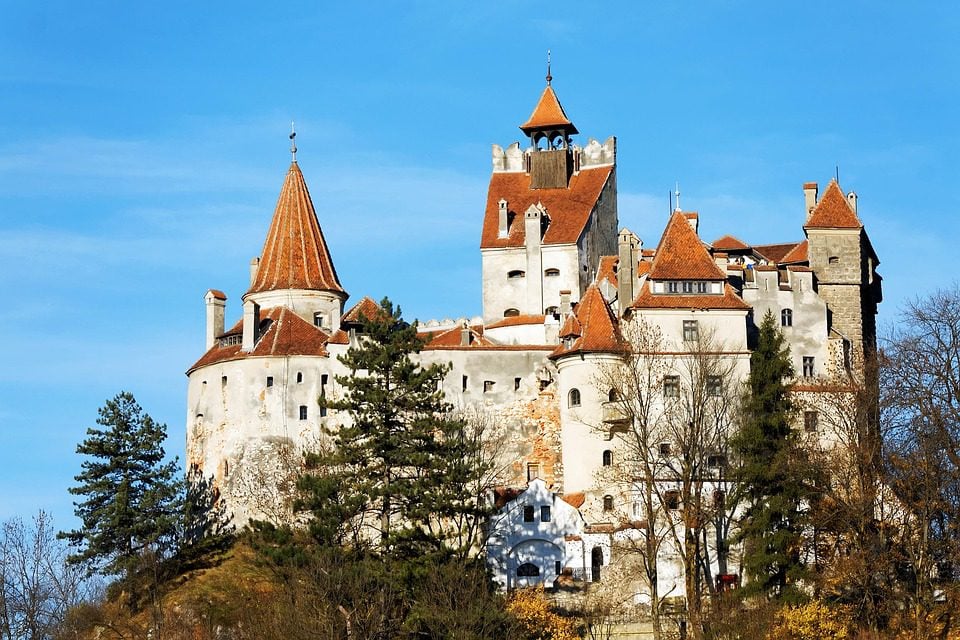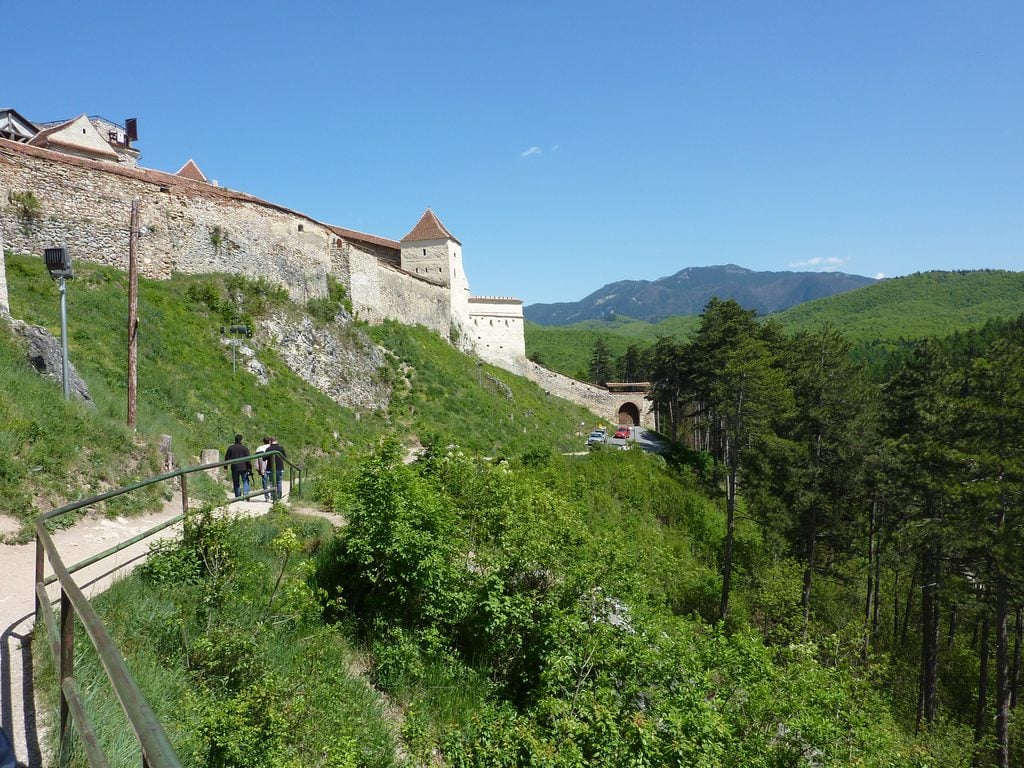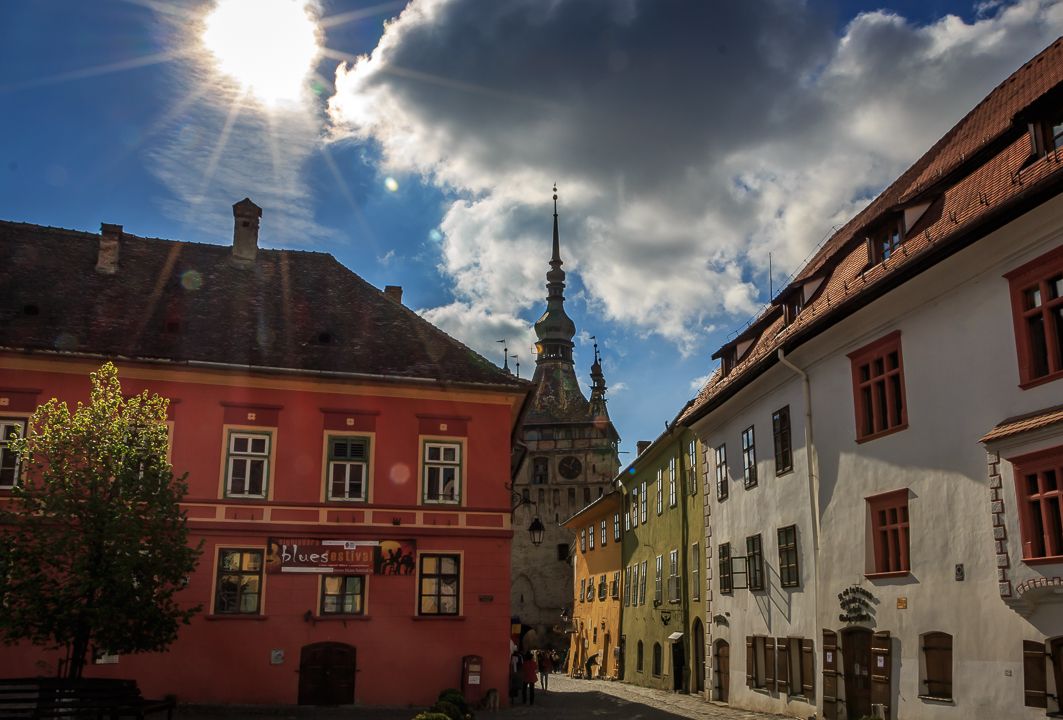Romania’s Rich History: Medieval Castles and Fortresses
Romania is home to several medieval castles and fortresses which are a top attraction for foreign tourists planning to visit my country. Located in beautiful areas, these castles are full of culture and history, and their unique architecture makes them particularly impressive.
Most people think of Romania as the home of Dracula since Bran Castle, but there’s so much more to my country’s history than a fictional movie character.
For example, Transylvania’s fortified churches and citadels are an essential element of the Saxon heritage, and UNESCO has even recognized some as World Heritage Sites due to their remarkable historical and cultural value. In the 14th century, the king of Hungary, Geza II, asked Saxons from Western Europe to move to Transylvania and protect the Kingdom of Hungary’s eastern frontiers in exchange for land and privileges.
In this context, the Saxons built several fortified churches and surrounded them with high walls to make them impenetrable to the Ottoman and Tatar invasions, thus shielding communities and local families from danger. Unfortunately, the buildings started deteriorating after the Saxons immigrated due to the communist regime.
However, Romanians worked hard to preserve many historical buildings, restoring the region’s atmosphere. They are now among the best places to visit during your trip to the Carpathian country.
So here are the most beautiful castles and citadels I think you should put on your bucket list when you visit Romania.
Bran Castle
Bran Castle is the most famous Romanian castle and was once mentioned on a list of the top 10 most impressive castles worldwide conducted by CNN. Also known as the residence of Count Dracula, the castle is located in Bran, close to the popular tourist city of Brasov, standing on a hilltop that overlooks the stunning countryside and the impressive Carpathian Mountains.

Between 1920-1948, Bran was the home of Queen Maria of Romania, as she received it as a gift from the local council of Brasov. Queen Maria was passionate about art, interior design, and architecture, so she transformed the fortress into a beautiful residence for the royal family.
Today, the castle is a museum displaying furniture and art collected by Queen Maria, which visitors can enter by purchasing tickets online or in person.
The castle’s steep stairs, narrow corridors, and dark rooms inspired many film directors and writers to create exceptional masterpieces. Bran is also a preferred location for organizing different Halloween events and provides a memorable experience to tourists who pass through its gates. This castle’s legends meet history, making it a unique spot for travelers fascinated with medieval architecture.
Corvin Castle
If you’re looking to discover a legendary castle, Corvin Castle is the ideal destination. And, in my opinion, it’s the most authentic castle in Romania! Also called Hunyadi Castle, Corvin Castle is located in Hunedoara and was first built in 1446 and upgraded continuously over the following centuries to reflect its growing importance.
It is an authentic Gothic construction, and even if the castle’s design now looks a bit more sophisticated, visitors still find it impressive, both on the outside and on the inside. It is a large, imposing structure with remarkable towers, windows, and turrets. Its tall and colored roof tiles stand out, and the balconies are made from intricate stone carvings.
The Corvin Castle is associated with Dracula’s myth, namely that Vlad the Impaler -the famous voivode- was kept prisoner in the building. This has contributed to the castle’s dark history, which gained the reputation of being a place of disgrace and terror.
The Hunyadi Castle is worth visiting and will impress you with its interiors, such as the New Gate Tower, the Council Hall, and the Knights Hall. It exhibits many beautiful paintings, clothing, furniture, armor, and weapons. In the castle’s court, graphic drawings show the torture methods used to discipline wrongdoers. Once you get to Corvin Castle, you can delve into its mysteries and legends and have an enriching travel experience.
Rasnov Citadel
Rasnov Citadel (also called The Peasant Citadel Rasnov) is a popular tourist attraction in the city with the same name. Situated 17 km from Brasov, Rasnov is a beautiful city with many historical, natural, and family attractions. The citadel in Rasnov was once a refuge for villages who wanted to protect themselves from invading armies.

The fortifications on the citadel hill go back to the Dacian era when the villagers turned them into a settlement with a chapel, a school, and permanent residences. They protected the citadel with heavy fortifications with 5 meters high walls, two bastions, and nine towers.
However, there was a lack of water supply inside the fortress’ walls, and as the legend says, villagers kept two Turkish prisoners to dig a well. It was only after 17 years that they could finally reach the water, and during this period, the prisoners wrote Quaran verses inside the walls of the wells.
Sighisoara Citadel
In the heart of Transylvania, there is a city like no other: Sighisoara – Europe’s last remaining inhabited medieval fortress, also a UNESCO heritage site. This treasure of the 16th century has a lot to offer visitors, and one cannot help but fall in love with the charming medieval town.

The history of the Sighisoara Citadel goes back to the Roman period when the Dacians built the Sandava fortification in the 1st century AD. Later on, in the 12th century, the Saxons settled in Transylvania at the request of the King Bela IV of Hungary, who wanted them to protect his realm’s frontier. The Saxons then built a settlement on the ruins of Sandava, which they named Schäßburg, or Sighisoara, as called in Romanian.
With its cobbled streets, old strategic towers, and colorful buildings, Sighisoara Citadel has many beautiful attractions. The Clock Tower is an impressive tower of the fortress – a four meters tall building which was once the place where the town’s council held their meetings. As you climb up the tower’s staircase, you’ll discover displays with remarkable exhibits from the Sighisoara History Museum.
Other local attractions in the citadel include the Torture Museum, the Church on the Hill, and the Defense Walls. And if you’re willing to climb 175 steps, the Covered Scholar’s Stairs are also interesting!
Poenari Fortress
Located in the Carpathian Mountains, Poenari Fortress is the authentic Dracula’s Castle, which the Walachian rulers built in the 13th century. The castle had different names over the decades, and its residents also changed until it was ultimately abandoned.
But in the 15th century, Vlad the Impaler, the inspiration for Dracula, fell in love with the location and ordered its restoration, turning it into one of his main places of residence. Poenari fortress was used for a long time after Vlad died, but in the 15th century, it was abandoned again and left in ruins due to the weather’s ravages.
However, it later underwent repairs and is now an exciting place to explore if you want to immerse yourself in some centuries-old history – also, it is perfect for those who want to get active, as you have to climb 1,480 stairs to get to the ruins. But once there – the views are worth it, and you’ll quickly see why Vlad the Impaler loved this place!
Oradea Citadel
The citadel of Oradea is a significant heritage site and the city’s symbol. The monument has a rich history of nearly 1,000 years and was built during the reign of King Ladislaus of Hungary.
Oradea Citadel faced many legendary attacks throughout the centuries and was destroyed by the Tatars and Turks before the construction of the five bastions. The fortress was also subject to the Ottoman siege, which was so devastating that it almost destroyed the city.
From an architectural perspective, Oradea Fortress went through three development stages: a Romantic stage, a Gothic stage, and the Renaissance-Baroque stage. After its restoration during the 16th-17th centuries, Oradea Citadel became an Italian bastion-type fortification – unique in Eastern Europe.
Oradea is a stunning city – and also my hometown! – with many attractions, such as the Town Hall Tower, the Bishop’s Palace, and the Black Eagle Palace. And since you can’t have a complete travel experience without tasting local food, consider visiting the Rosecas – a classy restaurant where you can enjoy a meal, such as the classic – but delicious – clear chicken soup. And if you’re an adventure-seeker, you can also go hiking at Apuseni National Park, 2 hours away by car.
Marius Iliescu is the founder of Romanian Friend: a one-stop shop website with travel inspiration, tour ideas, and practical info for those planning to visit Romania. His mission is to make sure people experience the best of his country while supporting responsible, inclusive tourism that helps local communities. Follow them on Facebook or Instagram.










